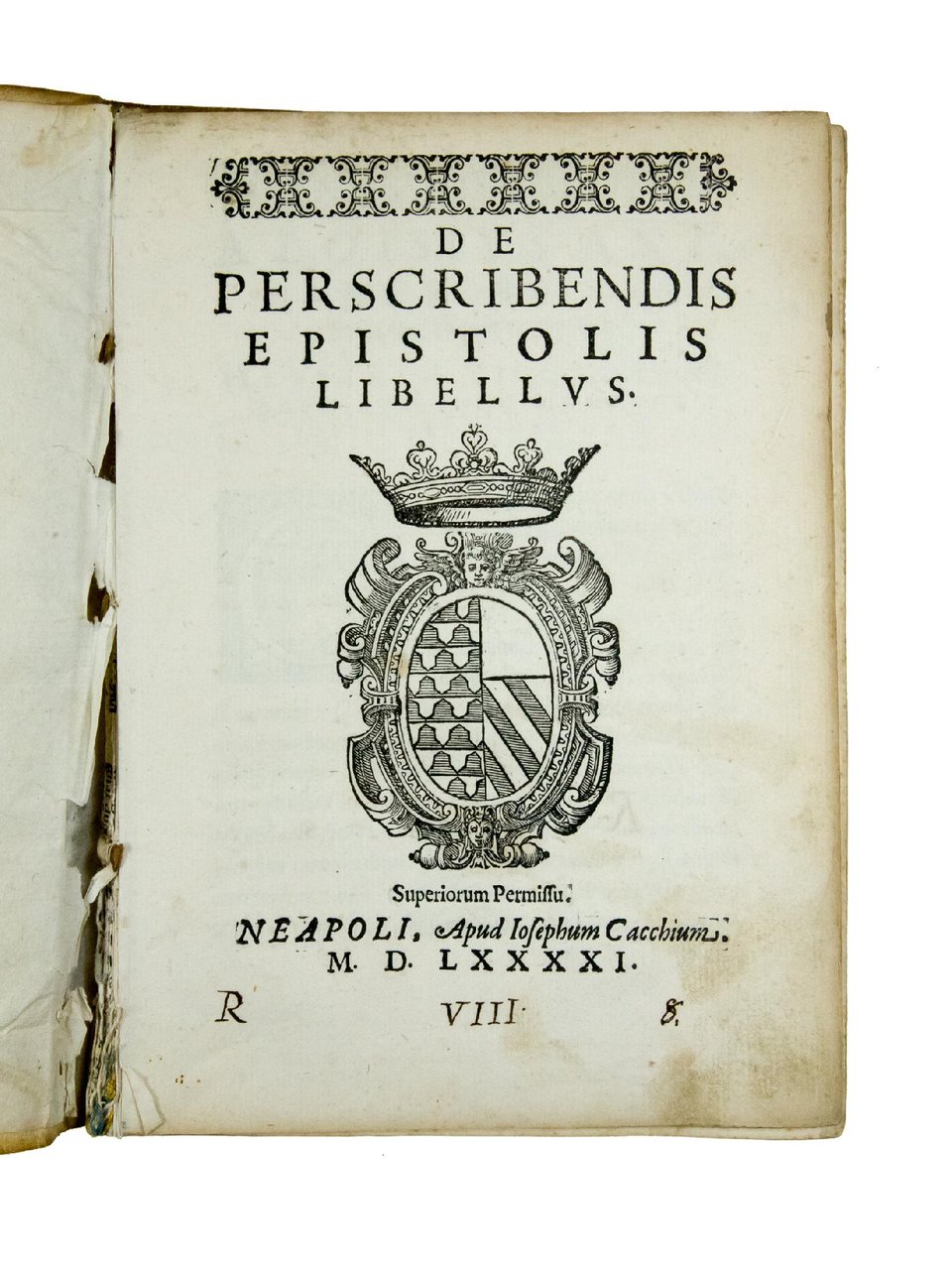

Libros antiguos y modernos
SANTORELLI, Luigi Antonio (fl. 2nd half of the 16th century)
De perscribendis epistolis libellus
Giuseppe Cacchi, 1591
900,00 €
Govi Libreria Antiquaria
(Modena, Italia)
Los gastos de envío correctos se calculan una vez añadida la dirección de envío durante la creación del pedido. El vendedor puede elegir uno o varios métodos de envío: standard, express, economy o in store pick-up.
Condiciones de envío de la Librería:
Para los productos con un precio superior a 300 euros, es posible solicitar un plan de pago a plazos al Maremagnum. El pago puede efectuarse con Carta del Docente, Carta della cultura giovani e del merito, Administración Pública.
Los plazos de entrega se estiman en función de los plazos de envío de la librería y del transportista. En caso de retención aduanera, pueden producirse retrasos en la entrega. Los posibles gastos de aduana corren a cargo del destinatario.
Pulsa para saber másFormas de Pago
- PayPal
- Tarjeta de crédito
- Transferencia Bancaria
-
-
Descubre cómo utilizar
tu Carta del Docente -
Descubre cómo utilizar
tu Carta della cultura giovani e del merito
Detalles
Descripción
Edit 16, CNCE 47740; Gueudet, p. 696; P. Manzi, La tipografia napoletana nel '500: Annali di Giuseppe Cacchi, Giovanni Battista Cappelli e tipografi minori (1566-1600), (Firenze, 1971), p. 151, no. 152.
FIRST EDITION. The work opens with a dedicatory letter by Santorelli to Giovanni Battista Loffredo (d. 1609), Marquis of Monteforte, dated January 13, 1590. This is followed by a preface to the reader by a relative of Santorelli, Tommaso Aniello Schiavo, in which are enumerated the most elegant letter writers of the past, e.g. Angelo Poliziano, Christophe de Longueil, Pietro Bembo, Jacopo Sadoleto, and Paolo Manuzio.
Santorelli gives the definition of twenty kind of letters (from nunciatoria to conquestatoria). At the end of these definitions are cited some sources from ancient authors where such letters can be found, and some definitions are accompanied by examples from his own correspondence.
At the end of the volume are found some rhetorical rules to be observed in letter writing and a list with forms of address, De superscriptione epithetorum: “Le répertoire placé sous cette rubrique correspond tout à fait aux listes d'états du XVe siècle, bien que le mot ne soit jamais prononcé. Après le clergé, du Pape à l'abbesse (ce qui peut passer pour un progrès), on trouve un laïcat, ou la noblesse d'épée disparaît au profit de la magistrature: après l'empereur, le roi, le prince et le duc, on va du consul au juge; vient un tiers-état qui est encore conduit par les intellectuels, théologiens en tête, les simples ‘citoyens' passeront après le scholasticus et le tabellarius; un repentir bénéficiera au chevalier et au soldat (on croirait à une influence d'Érasme), mais aussi à l'orateur. Comme dans les méthodes du XVe siècle allemand, mais aussi chez Pontanus, la famille vient en fin. Reste que les laboratores (sauf l'artisan) sont oublié, ou exclus” (G. Gueudet, L'art de la lettre humaniste, Paris, 2004, p. 439).
Luigi Antonio Santorelli was born at Monteforte and practised as a lawyer. The De perscribendis epistolis libellus was reprinted at Naples in 1653 (cf. C. Minieri Riccio, Memorie storiche degli scrittori nati nel regno di Napoli, Napoli, 1844, p. 319).

